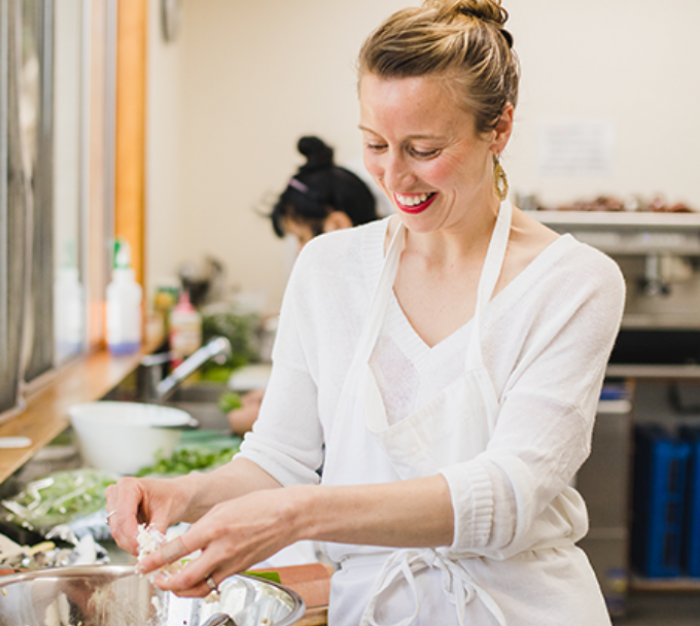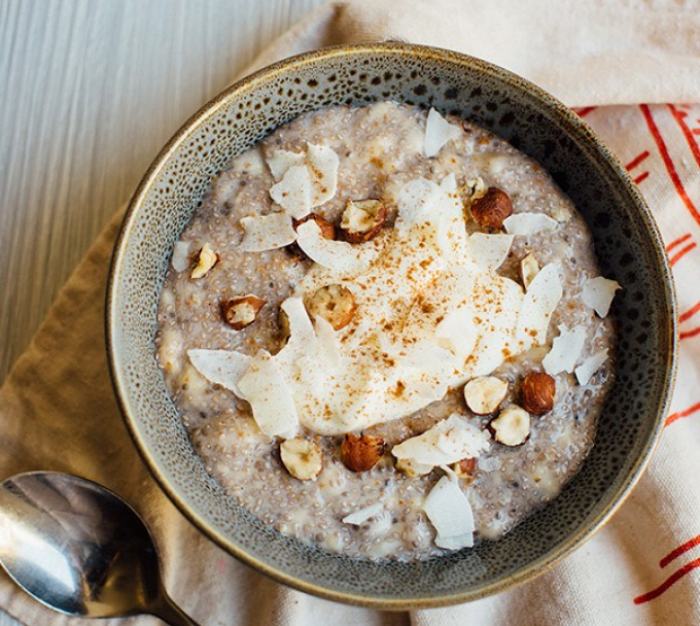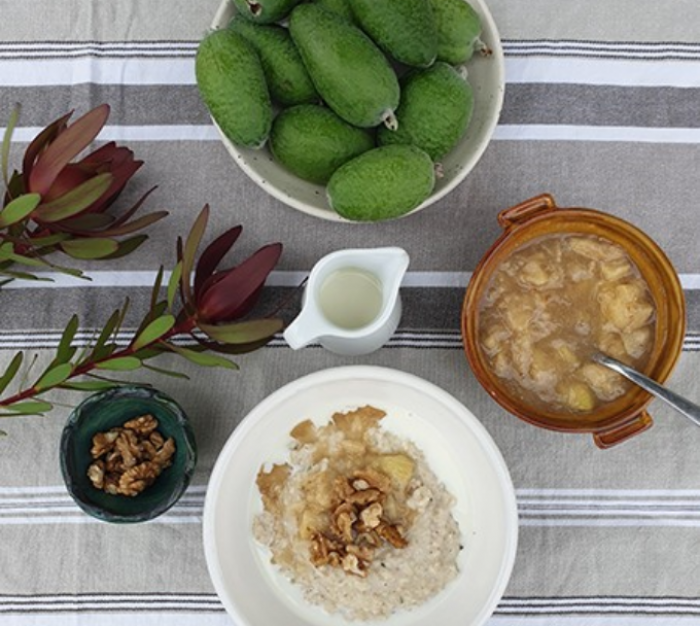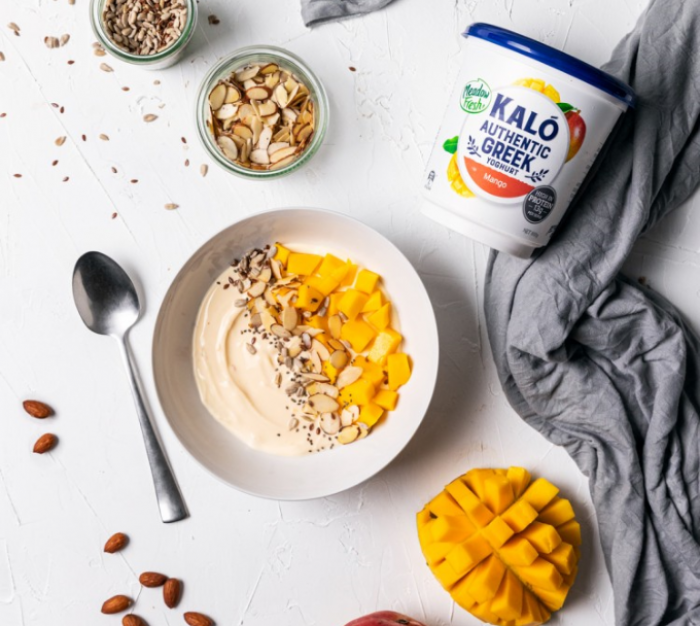Forming wholesome and positive routines firstly at home and then also in your place of work (if applicable), creates a ripple effect throughout all areas of your life. Routine is known to anchor us which means we are better able to cope during unknown and unpredictable periods of time. It also allows us to better deal with stressful situations because we are more likely to feel in control of other areas of our lives.
Some key areas of our lives that benefit greatly from routine and structure are:
- Nutrition
- Movement
- Sleep
Nutrition
In terms of nutrition and what you fuel your body with, it’s what you do day in and day out that impacts on your health the most. A wonderful little routine to put in place is to begin your day with a nutrient-dense breakfast. After a night of rest, your body has used stored energy to keep you alive overnight undertaking vital bodily processes that we don’t even think twice about. Enjoying a wholesome breakfast kick starts your metabolism for the day, provides vital nutrients for energy and mental clarity and offers valuable fibre to support digestive health. During Winter we often crave hearty foods that warm us from the inside out and a bowl of morning porridge is both a delicious and nutritious way to start your day. Porridge is a wonderful source of fibre and slow-release carbohydrates while adding seasonal fruit provides immunity boosting nutrients such as vitamin C to help protect against colds and flu. Adding some nuts or seeds provides essential protein which helps to keep you feeling fuelled and satisfied while the wholesome fats they contain supports a healthy functioning brain. Not to mention cooking the oats in quality milk and/or topping it with yoghurt, provides a rich source of both protein and calcium, the latter being extremely important for the strength of our bones. Try the Porridge with Stewed Seasonal Fruit + Walnuts below for the ultimate breakfast! This nutrient-dense breakfast is wonderful source of protein, calcium and fibre.
Of course, we can’t nourish ourselves with wholesome food or create healthy habits if nutrient-dense foods aren’t in our homes. So, the first step is to make sure you prioritise these foods on your shopping list. Make it part of your routine. Basing meals and snacks around foods such as vegetables, fruit, wholesome carbohydrates (such as brown rice, quinoa, oats, starchy vegetables), healthy fats (think nuts, seeds, nut butters, olive oil), protein foods (such as seafood, eggs, chicken, beef, lamb or legumes) and quality dairy such as milk, cheese and yoghurt means that a multitude of nourishing foods are readily available when it comes to making both meals and snacks.
Smoothies are a great way to enjoy several different vegetable and fruits in one serve and make a perfect post-exercise recovery snack. Try this Super Greens Smoothie recipe here. Or if you’re after something more warming, try scrambled eggs on wholegrain toast with a dollop of pesto or a bowl of homemade vegetable soup alongside some toasted ciabatta or sourdough. Once you have started making eating well part of your daily routine, you’ll be amazed how much better your body is armed to cope with all that life throws our way.
Movement
If you think back to the evolution of humans, we were made to move our body and be active throughout they day. From foraging food, gathering and chopping wood to create fire or walking long distances to a river to collect water, movement was something that occurred without a second thought. However, many of us find ourselves in a sedentary position for majority of the day. Moving from the couch to a dining chair, to a car seat to an office chair, and the same in reverse. A key notion to counteract this is to create a sustainable routine to add movement into your daily life. Perhaps it’s scheduling in a morning walk, this could be daily or a few times each week. It may be joining a sports team for a weekly game or attending a yoga class a couple of times each week. It may be that you walk your dog most evenings after work or that you bike beside your children to and from school each weekday. The important thing is to find things you enjoy that enable you to move your body and then build them into both your daily and weekly routine! Movement offers a host of benefits to both your physical and mental health. Furthermore, any movement that you can incorporate out in nature, is especially therapeutic. Perhaps a long bush walk once a week is a realistic addition to your weekly movement routine?
For those in sedentary working positions, you can add structure to your working day by interrupting long periods of sitting time regularly throughout the day (this is in addition to fun movement you have already planned outside of work!). This could include things like walking to see colleagues rather than emailing them. Using your lunch break to enjoy a 10-minute walk before sitting down to eat, standing up every time you answer the phone or taking the stairs instead of the elevator. Once you start to incorporate such simple measures into your daily workplace routine, you may start to notice increased energy levels and reduced levels of stress.
Sleep
Creating a relaxing evening ritual to encourage a restorative and restful sleep is one of the most beneficial things you can do to support optimal health and wellbeing. It is easy to underestimate the power of sleep living in a world that appears to never stop but it is so incredibly important to prioritise this part of your day. Undertaking sequential little steps that prepare your body for sleep means that you are more likely to go to sleep and then sleep well throughout the night. Some useful habits that support a restorative sleep include:
- Reducing caffeine intake in the afternoons by consuming herbal tea rather than tea or coffee. While you may not think your afternoon coffee is negatively affecting your sleep it most certainly will be affecting the QUALITY of your sleep. The half-life of caffeine is really long. This means that if you have a coffee around 10am, at 10pm that night around ¼ of the caffeine is still in your system. Hence, it’s much more beneficial for sleep to enjoy your coffee in the first half of the day.
- Turning off your phone or any other devices at least 1-2 hours prior to bedtime. This helps the body with the production of the hormone melatonin which helps us to go to sleep and stay asleep as mentioned earlier. The emission of blue light from many devices often suppresses production of this sleepy hormone.
- Ensuring you get enough natural light during the day by spending time outside. This supports the body to produce a hormone called serotonin (our happy/energetic hormone that also helps to keep us calm and focused). In return when night falls, we are better able to produce melatonin which support a quality sleep.
- Sleep in a cool dark room. Ensuring you have a dark room further promotes the production of our sleepy hormone melatonin.
- And of course, managing levels of stress and anything that’s troubling you will further benefit a restful sleep. Whether this means chatting to friends or family or enlisting the help of someone in a specialist field, a problem shared, is a problem halved.
Perhaps a good routine to try and incorporate into your evening routine is turning off your phone one to two hours prior to bed, doing some light stretches and then heading to bed to a read a book with a dim nightlight. And of course, when we discontent with our devices, we also open ourselves up to connect with those in our household. To ask about their day, share plans or just to check in and see how they are.
There are many small things we can incorporate into our daily lives that over time create the most significant impact on our overall health and wellbeing. And after some time, we won’t even know we are doing them…they will have become second nature and part of our everyday routine, just like brushing our teeth! For those with children, there is a further benefit to this because you will be passing on valuable lessons to our future generation. What a gift to pass on.
Porridge with Stewed Feijoas + Walnuts
Serves 1-2
Ingredients
- ½ cup rolled oats
- ½ cup Meadow Fresh milk
- ½ cup recently boiled water
- 1 Tbspn hemp seeds (optional, leave out if not available)
- 1 tsp honey
- Sprinkle of cinnamon
To serve:
- Handful of walnuts
- Extra milk
- 1-2 Tbspn stewed Feijoas (see recipe below) – or use any fresh, frozen or seasonal stewed fruit
Add all the porridge ingredients into a small saucepan and bring to the boil, stirring constantly until the oats are plump and most of the liquid has been absorbed. Pour into a serving bowl and top with walnuts, feijoas and extra milk.
Stewed Feijoas
- 1 cup feijoa flesh (simply cut feijoas in half and scoop out flesh with a teaspoon)
- ½ Tbspn honey
- ¼ tsp cinnamon
Place everything into a saucepan and bring to the boil. Turn heat down and simmer for 10 minutes. Leave to cool. Store leftover feijoas in a glass jar or sealed container in the fridge.



